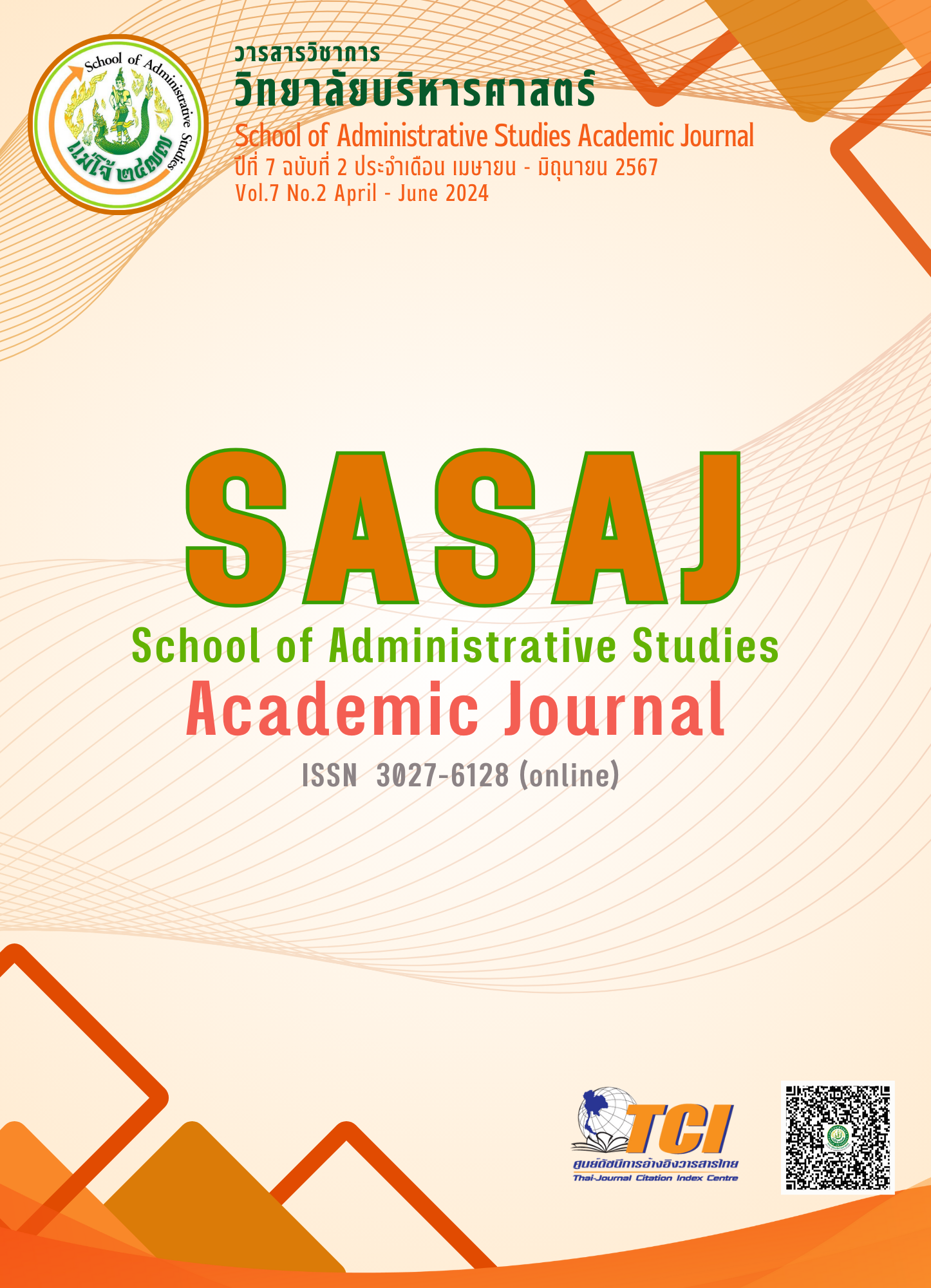Policy Driving Strategy and Network Collaboration in the Old City of Chiang Rai under the framework of the Northern Economic Corridor and Becoming a Creative Economy City
Main Article Content
Abstract
The research on policy-driving strategy and network collaboration in the old city of Chiang Rai under the framework of the northern economic corridor and becoming a creative economy city aims to 1) analyze the potential of tourist attractions in the old town under the northern economic corridor and 2) develop strategies and driving policies for cooperation in the Chiang Rai old City network under the framework of the northern economic corridor and creative economy cities. The population used in this research are 1) 30 people involved in the promotion and development of the old town in Mueang Chiang Rai district, Chiang Saen district, and Wiang Pa Pao district, 2) 400 tourists and 3) 45 tourism stakeholders in the old town area of 3 districts. The research instruments are questionnaires, in-depth interviews, and focus-group discussions.
The results reveal that the old city area of Chiang Rai province has the potential to be a tourism and health tourism industry and an agricultural and food industry. The strategic plan for driving policies and strategies in the old city towards the Northern Economic Corridor of Chiang Rai province has 6 aspects; 1) upgrading the potential development of tourism and service personnel to meet the needs of the Next Normal era. 2) Promoting public relations and creating awareness about Chiang Rai Province's readiness to be a gateway for cooperation in the Mekong Sub-region. 3) Developing standards for tourist attractions and tourism activities in line with changes in current tourism trends. 4) Creating a network of cooperation in developing the old city area in Chiang Rai province, linking the Northern Economic Corridor. 5) Development of databases and information technology to promote the movement of Chiang Rai province under the Northern Economic Corridor framework. 6) Upgrading and adding value to products from wisdom, cultural products, agricultural and livestock products, and works of art.
Article Details

This work is licensed under a Creative Commons Attribution-NonCommercial-NoDerivatives 4.0 International License.
ลิขสิทธิ์
References
ชัยยุทธ ชิโนกุล. (2561). ส่วนผสมทางการตลาดของธุรกิจในเขตพัฒนาเศรษฐกิจพิเศษภาคเหนือตอนบน. วารสาร มจร สังคมศาสตร์ปริทรรศน์, 7(2), 1-7.
นครินทร์ น้ำใจดี. (2563). การสํารวจและศึกษาภาพรวมทรัพยากรทางวัฒนธรรมที่สําคัญในเขตย่านเมืองเก่าเชียงราย อําเภอเมือง จังหวัดเชียงราย. วารสารสังคมศาสตร์วิชาการ, 13(1), 37-47.
นุชนารถ รัตนสุวงศ์ชัย. (2554). กลยุทธ์การพัฒนาการท่องเที่ยวเชิงวัฒนธรรม. วารสารมนุษยศาสตร์วิชาการ มหาวิทยาลัยเกษตรศาสตร์, 18(1), 31-50.
ปริณภา จิตราภัณฑ์. (2563). การพัฒนาการค้าและการผลิตบนเส้นทางระเบียงเศรษฐกิจแนวตะวันออก–ตะวันตก. วารสารสวนสุนันทาวิชาการและการวิจัย, 4(2), 36-43.
พัชรี สุวรรณศรี, และ สุภัทณี เปี่ยมสุวรรณกิจ. (2565). สถานการณ์เศรษฐกิจของไทยในปัจจุบัน. สืบค้นจาก https://dlink.me/gMk7L.
รักพงษ์ แสนศรี, ธฤษวรรณ อัมพรมหา, และ ธณวรรณ วรสิงห์. (2566). วิเคราะห์นโยบายท่องเที่ยวของรัฐบาลเพื่อกระจายจำนวนนักท่องเที่ยวและรายได้การท่องเที่ยวสู่จังหวัดที่ไม่ใช่เมืองหลวงผ่านโครงการระเบียงเศรษฐกิจของประเทศไทย. วารสารมนุษยศาสตร์และสังคมศาสตร์ มหาวิทยาลัยขอนแก่น, 40(2), 113-136.
รุ่งอรุณ กุลหินตั้ง. (2558). พฤติกรรมสารสนเทศของผู้ประกอบการบนระเบียงเศรษฐกิจอนุภาคลุ่มแม่นํ้าโขง. วารสารสารสนเทศศาสตร์. 3(3), 79-96.
หรรษธร ณรงค์, วิจิตรา ศรีสอน, และ สัณฐาน ชยนนท์. (2565). ยุทธศาสตร์การพัฒนาระเบียงเศรษฐกิจภาคตะวันออก(EEC). วารสารสันติศึกษา ปริทรรศน์ มจร, 10(3), 1256-1267.


